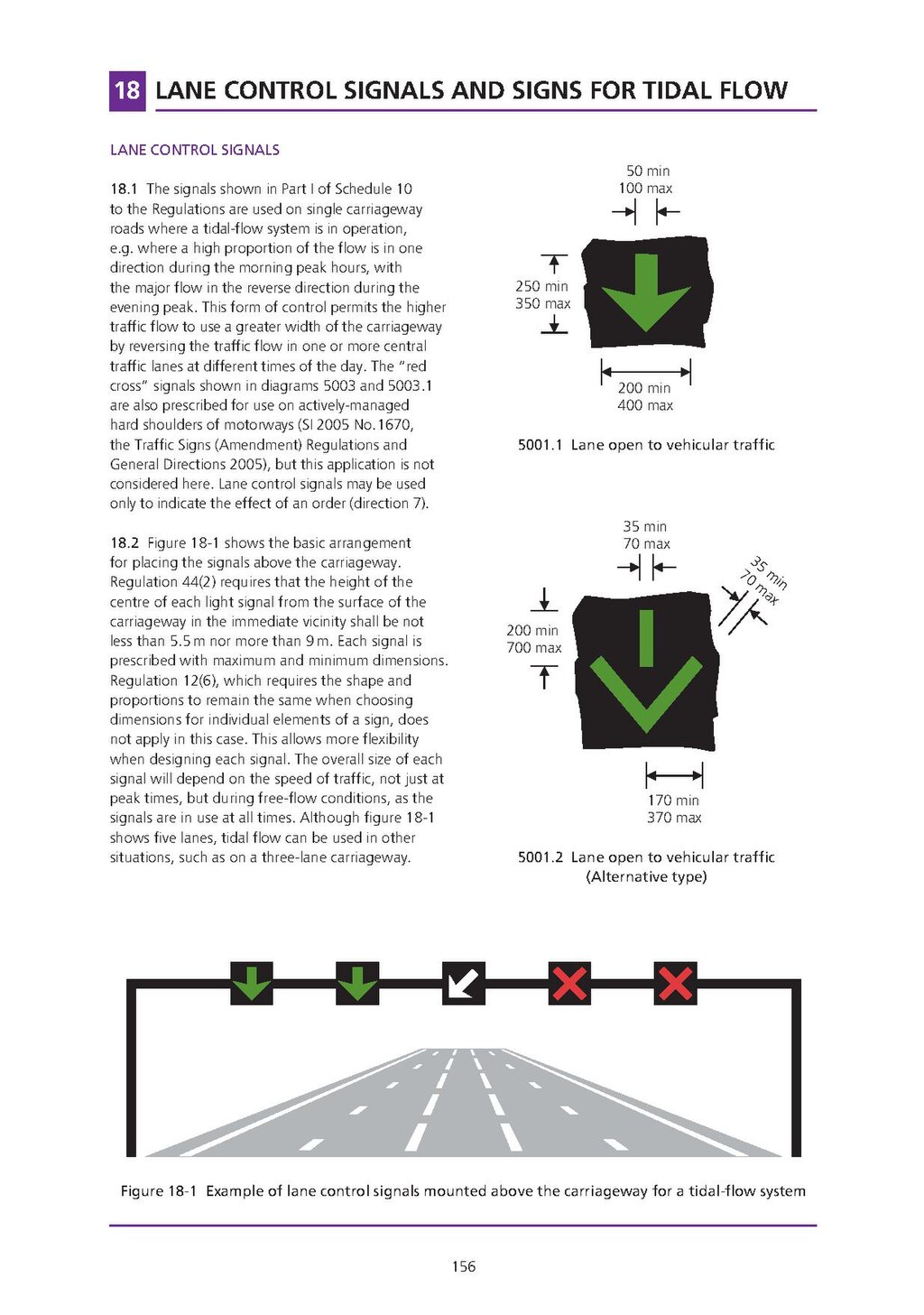18LANE CONTROL SIGNALS AND SIGNS FOR TIDAL FLOW
LANE CONTROL SIGNALS
18.1 The signals shown in Part I of Schedule 10 to the Regulations are used on single carriageway roads where a tidal-flow system is in operation, e.g. where a high proportion of the flow is in one direction during the morning peak hours, with the major flow in the reverse direction during the evening peak. This form of control permits the higher traffic flow to use a greater width of the carriageway by reversing the traffic flow in one or more central traffic lanes at different times of the day. The "red cross" signals shown in diagrams 5003 and 5003.1 are also prescribed for use on actively—managed hard shoulders of motorways (SI 2005 No. 1670, the Traffic Signs (Amendment) Regulations and General Directions 2005), but this application is not considered here. Lane control signals may be used only to indicate the effect of an order (direction 7).
18.2 Figure 18-1 shows the basic arrangement for placing the signals above the carriageway. Regulation 44(2) requires that the height of the centre of each light signal from the surface of the carriageway in the immediate vicinity shall be not less than 5.5m nor more than 9 m. Each signal is prescribed with maximum and minimum dimensions. Regulation 12(6), which requires the shape and proportions to remain the same when choosing dimensions for individual elements of a sign, does not apply in this case. This allows more flexibility when designing each signal. The overall size of each signal will depend on the speed of traffic, not just at peak times, but during free—flow conditions, as the signals are in use at all times. Although figure 18.1|18-1 shows five lanes, tidal flow can be used in other situations, such as on a three-lane carriageway.
156



